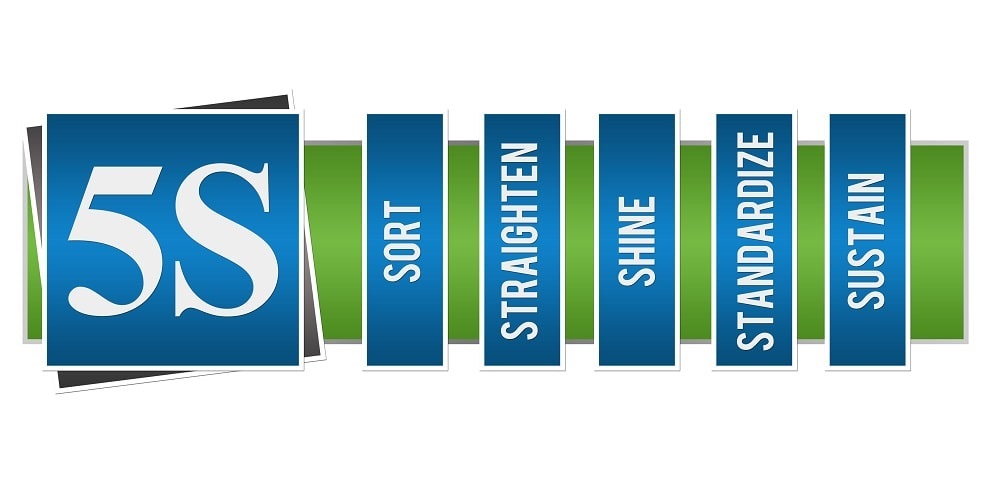
Something is necessary when it is needed to achieve a desired result, or perform some operation or activity. Sort, one of the 5S (sort, straighten, shine, standardize, sustain) activities, helps teams reinvent work areas by deciding which items are required for daily activities and relocating those items that are infrequently needed or not used in the work area. The Sort activity allows teams get to the bare essentials for completing activities successfully and safely.
One of the most challenging concepts in Sort is the differentiation between needed and unneeded items. To make this step clear and easy to implement, often it is important to have a conversation to define what is “necessary” for the organization. Once a definition has been agreed upon, improvement teams can work through an inspection checklist, sorting out the unnecessary items in order to create a more efficient workspace.
Defining Necessary
For some teams, necessary means anything that is used on a daily basis. For others, it means anything needed to develop a particular product or deliver a particular service. Other teams focus on everything that is needed for a week’s worth of work and so begin relocating or eliminating items that are not used at least once a week.
So how do these teams come up with the criteria to define something as necessary or unnecessary? They begin by looking at frequency of use to determine whether an item should be located in a particular work area. It may help to focus on specific time parameters, such as use per shift, per day or per week, to determine if an item is unnecessary or necessary.
Another component to determine an item’s necessity is whether the item is obsolete, defective, trash or of unknown use in the work area. Items that are obsolete, defective and trash should be immediately labeled as unnecessary and returned, recycled, donated or discarded. Items that have unknown uses should be stored in a central location until the items’ use has been identified or an agreed-upon period of time has elapsed with the item in storage. Items that are infrequently used or incorrectly located also should be removed from the target workspace and placed in a holding area for later analysis and removal or storage.
Thorough Inspection
Ultimately, 5S teams should develop checklists to assist in scanning the work area for unnecessary items and acting on items that do not belong in the area. Consider creating a Sort inspection list to ensure that everyone in the work area is examining all potential items (Table 1). This can keep people from forgetting to sort through areas such as office corners or spaces under work tables – common spots for unneeded supplies.
| Table 1: Sort Inspection Checklist | |
Search these spaces:
Look for unneeded furniture:
Look for unneeded equipment:
|
Check walls and boards for:
Look for unneeded supplies:
Search these storage spaces:
Look for other unneeded items:
|
Another checklist that can be used during the 5S Sort activity is the item disposition list (Table 2). Think of the item disposition list as a guideline for placing needed items in a work area and for eliminating unneeded items in the area. The list should provide information on how to decide in which category an item belongs and what action should be taken, based on the categorization. For example, items used once per day or more should be stored at the point of use or carried on person. Items that are defective should be returned to supplier, recycled or discarded.
| Table 2: Item Disposition Checklist | |
| Category | Possible Actions |
| Obsolete |
|
| Defective |
|
| Garbage |
|
| Unneeded in this area |
|
| Used at least once per day |
|
| Used about once per week |
|
| Used less than once per month |
|
| Seldom used, must keep |
|
| Use unknown |
|
Taking Action
A brief conversation regarding the definition of necessary and how it relates to every item in the work area can set up a clear expectation of the job to be done during Sort. It also helps empower the 5S team to identify and analyze all the items in the area with a consistent and powerful approach. Using a standardized method for sorting encourages an outcome that is predictable and repeatable. Without agreement on what necessary means, everyone will approach the activity with their own perspective rather than a shared perspective.
However, the definition of necessary is only the first step in the Sort activity. Just because a team agrees on the definition, it does not mean they will always agree that a particular item is necessary or unnecessary. But with a common approach and a universal set of questions to analyze an item’s use, it will be easier to take action. When everyone can identify and take action on those items, the organization will realize the true space needed for a work area. This, in turn, will enhance quality, improve productivity and create a smoother and safer workflow for the area.